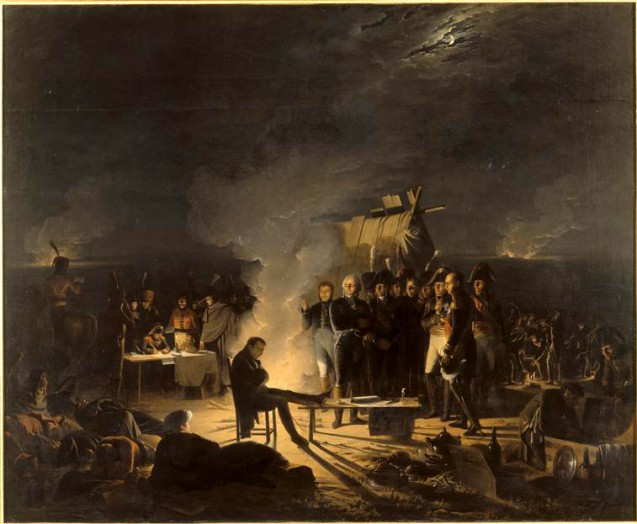The classic image of Napoleon sleeping in a simple tent and sharing the daily life of his soldiers is largely the result of effective “communication”, conveyed by paintings and engravings and through the memoirs of the soldiers. Whilst he did indeed stroll around the cantonments and sometimes share a bowl of soup with the men, Napoleon nevertheless always travelled in style and benefitted from a great deal of comfort wherever he went. It was the “Maison de l’Empereur” [the Emperor’s Household], an organisation financed by the civil list which employed as many as 2,700 people, that managed his travels. Several convoys were sent ahead of the Emperor in order to prepare his accommodation and bedding and to meet every possible requirement: ensuring that wherever he was to stay, even the lowliest shack, could be turned into an imperial palace. The French “Mobilier National” [National Furniture Collection] still has some of Napoleon’s “campaign furniture” – manufactured by the finest cabinet makers, bronze- and goldsmiths of the time – which was specially designed to be easily dismantled and transported. Similarly, the Emperor’s campaign tents, which were used whenever a suitable residence could not be requisitioned, were designed to imitate a small canvas palace, including an antechamber, an office and a bedroom. These logistics were subject to an extremely strict etiquette that was followed even during the Russian Campaign. The historian Pierre Branda has calculated that on crossing the Nieman, the “Emperor’s Household” comprised 400 men, nearly 500 horses and mules, and supplies of 3,464 bottles of wine and liqueurs, 155 kilos of gruyere cheese, nine bags of coffee, 230 litres of vinegar, 36 kilos of chocolate, 227 kilos of bacon as well as 50 kilos of mustard, 55 cooking pots, 268 saucepans, 29 covered braziers, and 18 cafetières. During the retreat, even though he has sometimes been depicted trudging through snow with a stick, Napoleon would always have had food and shelter, good heating, as well as horses and carriages.
Bullet Point #24 – Did Napoleon really “rough it” with his soldiers while on campaign?
Author(s) : LENTZ Thierry
Each “Bullet Point” will confront a question related to the First Empire. My remarks are designed to form the basis for debate and, I hope, research.
(Thierry Lentz, April 2019, translation RY)


